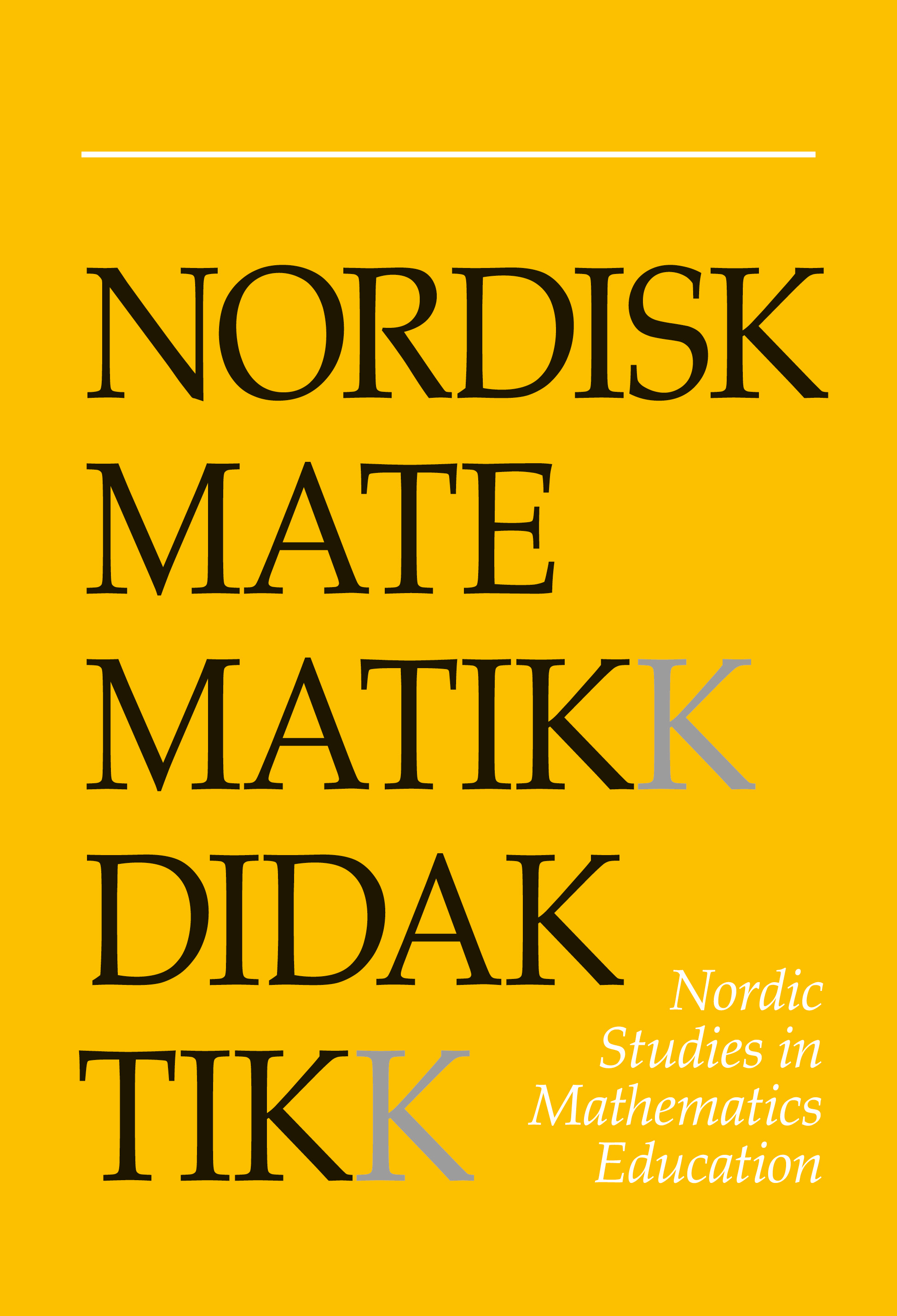Engaging children in mathematical discourse: a kindergarten teacher’s multimodal participation
DOI:
https://doi.org/10.7146/nomad.v24i2.149019Abstract
This article reports from a case study which investigates a kindergarten teacher’s multimodal participation in a teaching-learning activity involving addition and counting. By multimodal participation the kindergarten teacher engages nine children (age 4.9–5.9) in mathematical discourse and supports their opportunities for learning. Implications for practice are that kindergarten teachers (and school teachers) can benefit from being consciously aware of the affects their bodily actions have on children’s mathematical reasoning and how they can engage children in mathematical discourse without having to ”teach” (i.e., tell) children mathematical concepts and relations. The article also considers how kindergarten teachers can prepare for a smooth transition to school by introducing children to mathematics through semi-structured activities.
References
Baroody, A. J. & Purpura, D. J. (2017). Early number and operations: whole numbers. In J. Cai (Ed.), Compendium for research in mathematics education (pp. 308-354). Reston: NCTM.
Carlsen, M. (2013). Engaging with mathematics in the kindergarten. Orchestrating a fairy tale through questioning and use of tools. European Early Childhood Education Research Journal, 21 (4), 502-513. https://doi.org/10.1080/1350293X.2013.845439
Carpenter, T. P., Moser, J. & Romberg, T. (1982). Addition and subtraction: a cognitive perspective. Hillsdale: Lawrence Erlbaum.
Dovigo, F. (2016). Argumentation in preschool: a common ground for collaborative learning in early childhood. European Early Childhood Education Research Journal, 24 (6), 818-840. https://doi.org/10.1080/1350293X.2016.1239327
Erfjord, I., Hundeland, P. S. & Carlsen, M. (2012). Kindergarten teachers' accounts of their developing mathematical practice. ZDM, 44 (5), 653-664. https://doi.org/10.1007/s11858-012-0422-1
Fuson, K. C. (1992). Relationships between counting and cardinality from age 2 to age 8. In J. Bideaud, C. Meljac & J. P. Fisher (Eds.), Pathways to number, children's developing numerical abilities (pp. 283-306). Hillsdale: Lawrence Erlbaum.
Gee, J. P. (2008). Social linguistics and literacies: ideology in discourses (3rd edition). London: Routledge. https://doi.org/10.4324/9780203944806
Gee, J. P. (2011). An introduction to discourse analysis: theory and method (3rd edition). London: Routledge.
Kirby, P. (1996). Teacher questions during story-book readings: Who's building whose building? Reading, 30 (1), 8-15. https://doi.org/10.1111/j.1467-9345.1996.tb00837.x
Lillejord, S., Borte, K., Halvorsrud, K., Ruud, E. & Freyr, T. (2017). Transition from kindergarten to school: a systematic review. Oslo: Knowledge Center for Education.
Mercer, N. (2000). Words and minds: how we use language to think together. London: Routledge.
Myhill, D. & Dunkin, F. (2005). Questioning learning. Language and Education, 19 (5), 415-427. https://doi.org/10.1080/09500780508668694
O'Connor, M. C. & Michaels, S. (1996). Shifting participant frameworks: orchestrating thinking practices in group discussion. In D. Hicks (Ed.), Discourse, learning and schooling (pp. 63-103). New York: Cambridge University Press. https://doi.org/10.1017/CBO9780511720390.003
Radford, L. (2008). The ethics of being and knowing: towards a cultural theory of learning. In L. Radford, G. Schubring & F. Seeger (Eds.), Semiotics in mathematics education: epistemology, history, classroom, and culture (pp. 215- 234). Rotterdam: Sense Publishers. https://doi.org/10.1163/9789087905972_013
Radford, L. (2009). Why do gestures matter? Sensuous cognition and the palpability of mathematical meanings. Educational Studies in Mathematics, 70 (2), 111-126. https://doi.org/10.1007/s10649-008-9127-3
Radford, L. (2013). Three key concepts of the theory of objectification: knowledge, knowing, and learning. Journal of Research in Mathematics Education, 2 (1), 7-44. https://doi.org/10.4471/redimat.2013.19
Radford, L., Edwards, L. & Arzarello, F. (2009). Introduction: beyond words. Educational Studies in Mathematics, 70 (2), 91-95. https://doi.org/10.1007/s10649-008-9172-y
Rojas-Drummond, S. & Mercer, N. (2003). Scaffolding the development of effective collaboration and learning. International Journal of Educational Research, 39 (1), 99-111. https://doi.org/10.1016/S0883-0355(03)00075-2
Roth, W.-M., (1996). Teacher questioning in an open-inquiry learning environment: interactions of context, content and student responses. Journal of Research in Science Teaching, 33 (7), 709-736. https://doi.org/10.1002/(SICI)1098-2736(199609)33:7<709::AID-TEA2>3.0.CO;2-R
Roth, W.-M. (2001). Gestures: their role in teaching and learning. Review of Educational Research, 71 (3), 365-392. https://doi.org/10.3102/00346543071003365
Roth, W.-M. & Radford, L. (2011). A cultural-historical perspective on mathematics teaching and learning. Rotterdam: Sense. https://doi.org/10.1007/978-94-6091-564-2
Vygotsky, L. S. (1987). Thinking and speech. In R. W. Rieber & A. S. Carton (Eds.), The collected works of L. S. Vygotsky (pp.37-285). New York: Plenum Press.
Wells, G. (1999). Dialogic inquiry: towards a socio-cultural practice and theory of education. Cambridge University Press. https://doi.org/10.1017/CBO9780511605895
Wood, D. (1992). Teaching talk. In K. Norman (Ed.), Thinking voices: the work of the national oracy project (pp. 203-214). London: Hodder & Stoughton
Downloads
Published
How to Cite
Issue
Section
License

This work is licensed under a Creative Commons Attribution-NonCommercial-ShareAlike 4.0 International License.



